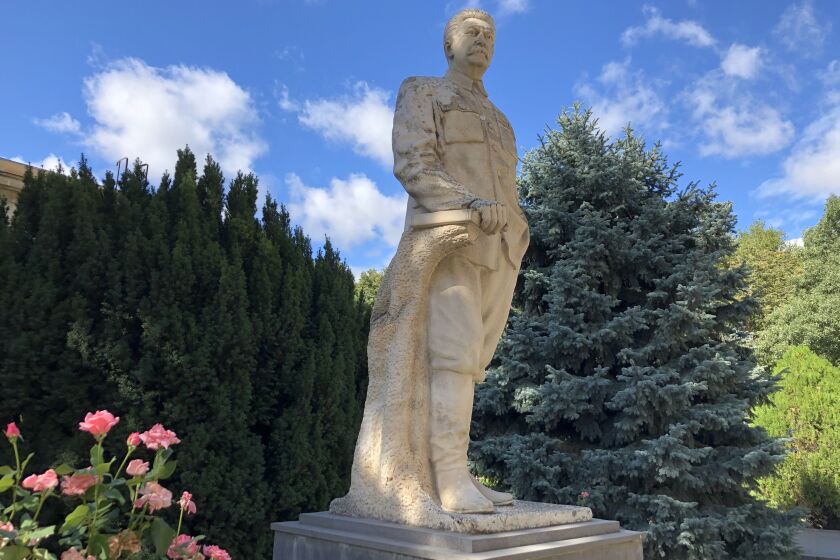Gori, Georgia: Tracing the Heartbeat of History, Birthplace of a Statesman, and Cultural Oasis

Introduction:
Gori, a city nestled in the heart of Georgia, unfolds as a living testament to the nation’s rich history, cultural heritage, and resilience. Surrounded by picturesque landscapes, Gori has evolved over centuries, leaving an indelible mark on Georgia’s narrative. In this extensive exploration, we embark on a journey through Gori’s historic landmarks, cultural treasures, and its unique role as the birthplace of one of Georgia’s most iconic figures.
Section 1: Historical Tapestry – Layers of Antiquity
1.1 Uplistsikhe Cave Town: The nearby Uplistsikhe Cave Town, an ancient rock-hewn city, stands as a testament to Georgia’s early civilization. Carved into the rocky terrain, Uplistsikhe dates back to the early Iron Age, showcasing intricate architecture, tunnels, and chambers that provide a glimpse into the daily life of ancient Georgians.
1.2 Gori Fortress: Gori Fortress, perched on a hill overlooking the city, is a medieval stronghold that has witnessed the ebb and flow of centuries. The fortress, with its sturdy walls and panoramic views, not only offers a glimpse into Georgia’s medieval past but also serves as a vantage point to appreciate the city’s evolving landscape.
1.3 Ateni Sioni Church: A short distance from Gori, Ateni Sioni Church stands as a remarkable example of Georgian ecclesiastical architecture. Dating back to the 7th century, the church features intricate frescoes and sculptural details, providing a window into the religious and artistic heritage of the region.
Section 2: Joseph Stalin – A Native Son’s Legacy
2.1 Stalin Museum: Gori holds a unique place in modern history as the birthplace of Joseph Stalin, the leader of the Soviet Union. The Stalin Museum in Gori is a comprehensive exhibition dedicated to his life, featuring his birthplace, personal items, and a display of the era in which he lived. The museum provides visitors with a nuanced perspective on Stalin’s complex legacy.
2.2 Stalin’s Birthplace: The small house where Joseph Stalin was born in 1878 has been preserved as a museum. Visitors can explore the humble surroundings that shaped the early years of one of the 20th century’s most influential figures, offering insight into the origins of the man who played a pivotal role in global events.
2.3 Controversies and Interpretations: The Stalin Museum and the legacy of Joseph Stalin continue to be subjects of debate and interpretation. Some view the museum as a historical archive, while others see it as a complex reflection of the past. Gori grapples with the challenge of presenting history in a way that respects diverse perspectives.
Section 3: Cultural Oasis – Art, Music, and Festivals
3.1 Gori State Drama Theatre: The Gori State Drama Theatre, established in the mid-20th century, is a cultural hub that enriches the city’s artistic landscape. Hosting a variety of performances, from classic plays to contemporary productions, the theatre contributes to Gori’s cultural vibrancy and provides a platform for local and national talent.
3.2 Gori Street Art Festival: Gori Street Art Festival, an annual event, transforms the city into an open-air gallery, showcasing the works of local and international artists. The festival not only beautifies public spaces but also fosters a sense of community engagement, making art an integral part of Gori’s urban experience.
3.3 Traditional Festivals: Gori celebrates various traditional festivals, reflecting the city’s commitment to preserving and promoting its cultural heritage. These events, featuring music, dance, and local crafts, bring together residents and visitors to revel in the rich tapestry of Gori’s traditions.
Section 4: Educational Landscape – Nurturing Minds
4.1 Gori State Teaching University: Gori State Teaching University, founded in the 20th century, plays a crucial role in shaping the intellectual landscape of the city. With a diverse range of academic programs, research initiatives, and a commitment to educational excellence, the university contributes to Gori’s role as a center of learning.
4.2 Vocational Training Centers: Gori’s commitment to education extends to vocational training centers that equip individuals with practical skills aligned with the demands of the modern workforce. These centers empower local residents, fostering economic development and resilience in the face of evolving industries.
4.3 Public Libraries and Cultural Centers: Public libraries and cultural centers in Gori serve as community hubs for knowledge exchange, literacy programs, and cultural activities. These institutions contribute to Gori’s educational landscape by promoting a culture of learning and providing resources for personal and intellectual growth.
Conclusion:
Gori, with its historical tapestry, cultural richness, and educational endeavors, stands as a city that encapsulates Georgia’s journey through time. From the ancient caves of Uplistsikhe to the birthplace of Joseph Stalin and the contemporary cultural festivals, Gori weaves together the threads of its past, present, and future. As the city evolves, Gori remains a dynamic destination, inviting residents and visitors alike to explore its layers of history, celebrate its cultural identity, and participate in the ongoing narrative of this remarkable Georgian city. Gori, at the crossroads of antiquity and modernity, beckons the world to discover the heartbeat of a city that has etched its story into the fabric of Georgia’s diverse and enduring heritage.




